Contents
Refractories Properties
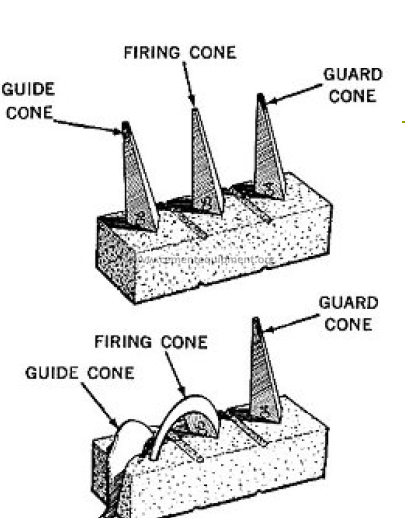
[wpecpp name=”package + Updates forever” price=”250″ align=”center”]
Refractories
Inorganic materials which can withstand very
high temperatures without softening, melting
or suffering a deformation in shape.
Essentially consist of single or mixed high
melting point oxides of elements such as
silicon, aluminium, magnesium, calcium and
zirconium. Ex.: Al2O3, SiO2, MgO, CaO and
ZrO2
Non-oxide refractories also exist and include
materials such as carbides, nitrides, borides and
graphite. Ex.: B4C, SiC, BN.
Fireclays (Al2O3 50 % + SiO2 50 % + small %
SiC) are also widely used in the manufacture
of refractories.
carbon (graphite) is used in some very severe
temperature conditions, but they cannot be
used in contact with oxygen, as they will
oxidize and burn
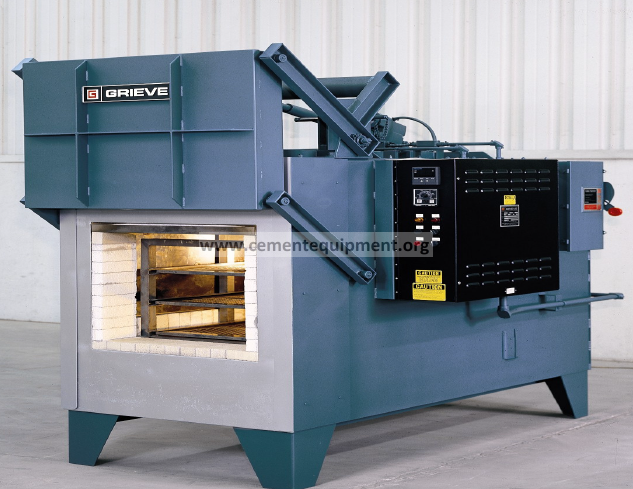
Brick kiln design
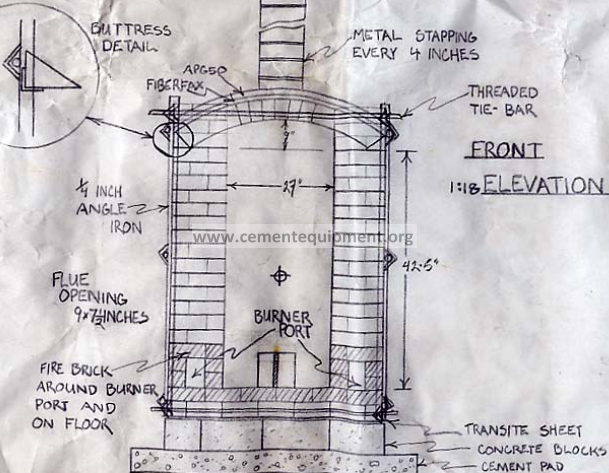
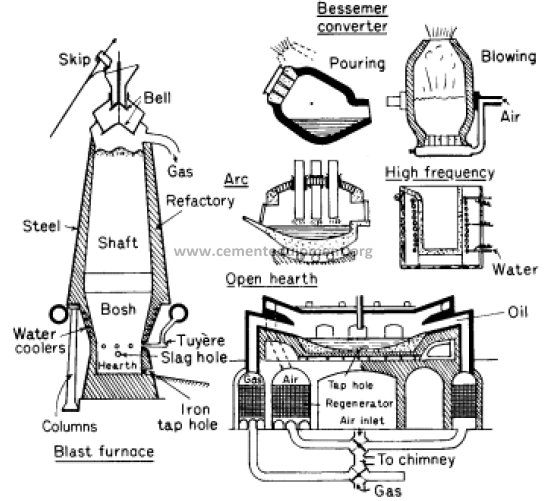
Rotary kiln
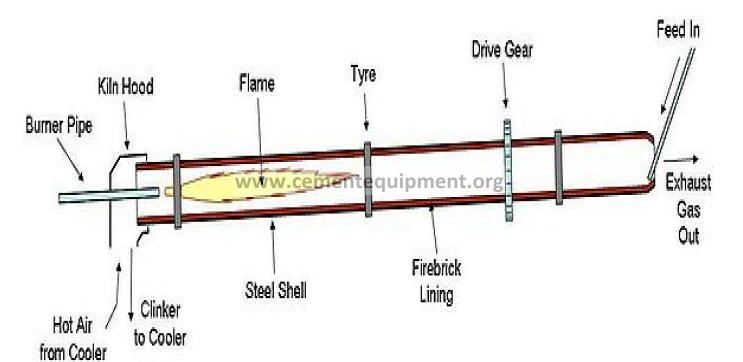
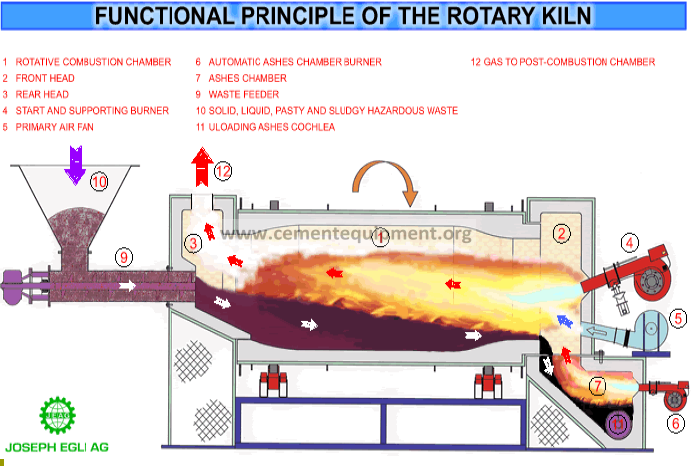
A Rotary kiln is a pyroprocessing device
used to raise materials to a high
temperature (calcination) in a continuous
process.
They are also used for roasting a wide
variety of sulfide ores prior to metal
extraction.
Objectives of refractive materials
1. to confine heat
2. to resist heat loss
3. to resist the abrasive and corrosive
action of molten metals, slags and gases
produced at high temp.
4. without under going any softening and
deformation in shape.
Characteristics / requisites of a
refractory
Infusible at high temperature
Their physical , chemical & mechanical properties
should not undergo substantial changes with
temperature.
Chemically stable
Possess good thermal strength.
Possess resistance to abrasion
Be able to withstand the overlying load at
operating conditions,
Permeability should be low
Expansion and contraction should be uniform.
Classification of Refractory Materials
Based on chemical composition
Acidic refractories
Neutral Refractories
Basic refractories
Acidic refractories
These are used in areas where slag and atmosphere
are acidic. They are stable to acids but attacked by
alkalis.
Ex- silica (SiO2), alumina (Al2O3) and fire clay etc.
Neutral Refractories
These are used in areas where slag’s and atmosphere
are either acidic or basic and are chemically stable to
both acids and bases.
The common examples of these materials are zirconia
(ZrO2), chromia ( Cr2O3) and carbon.
Basic refractories:
These are used on areas where slags and
atmosphere are basic, stable to alkaline
materials but reacts with acids.
The main raw materials belong to the RO
group to which magnesia (MgO) and CaO
(dolomite) is a very common example.
Properties of Refractory Materials
1. Refractoriness
2. Strength (or) Refractoriness under load (RUL)
3. Porosity
4. Dimensional Stability
5. Thermal expansion
6. Thermal Spalling
Properties
Refractoriness :
The ability of the material to withstand high
temperature withoput softening or deformation under
working conditions.
Objectives of the PCE test
1.to determine the softening temp. of the
refractory materials.
2. to check whether the given refractory
materials can be used for the particular
service temp..
3. to classify and test the purity of the
refractory materials.
It is necessary to the refractory material to have a
high softening temp. than the working temp.
Since most of the refractory materials are made by
mixer of metal oxides. They donot have the sharp
fusion temp..
Hence the softening point of the refractory materials
can be measured by ‘Seger Cones test’ or Pyrometric
Cone Equivalent test.
Pyrometric Cone Equivalent test
The refractoriness can be measured by ‘Seger Cones
test’ by comparing the softening behavior of the
testing material with the standard material (Seger
cones).
Seger Cones are small pyramid (tetrahetral cones)
shaped, 38 mm high and have a triangular base with
19 mm sides.

The test cone along with seger cone is heated in a
furnace under the standard condition of 10o C/min.
The temp. at which the sofening of the test cone occurs
is indicated by its apex touching the base.
The number given to the seger cone whose apex touches
the bottom along with the sample cone is the PCE value
of the refractory sample.
PCE value is the number given to the standard
pyrometric cone or seger cone whose apex touches the
bottom along with the sample cone.
If the test cone softens earlier than one standard cone,
later than the next cone, the PCE is the average value of
the two.
Strength (or) Refractoriness under load
(RUL)
Refractoriness under load (RUL) is a measure of the
deformation behavior of refractory materials when subjected to
a constant load and increasing temperature.
Ability to withstand under the load of charge, tension or stress
at high operating temperature conditions without breaking or
deformation.
EX. : Al2O3, Fire clay bricks have high refractoriness ie can
withstand at high temp. without softening but collapse under
appreciable load even before its softening point.
SiO2 brick has low refractoriness, but has high RUL.
Determination of refractoriness under load
(RUL) of refractory material
It is measured by RUL test.
It is the measure of temperature at which 10 %
deformation occurs on the test refractory specimen (5
cm2 base and 75 cm high) when subjected to a load of
3.5 or 1.75 kg/cm2 and heated at a rate of 10o C/min.
RUL test is also carried out to a maximum
temperature of 1700°C.
Thermal expansion
In a furnace design, allowance has to be made for
thermal expansion, since all material can under go
expansion and contraction.
Expansion affect the dimension of the furnace body.
Ref. material with least expansion is preferable.
Rapid expansion and contraction leads to the cracking
or breaking the materials.
Ref. materials with low thermal expansion coefficient
is preferable.
Thermal Spalling
breaking, cracking, or peeling off of a refractory under high
temperature.
Caused due to
Rapid changes in temperature, sudden expansion and contraction
and slag penetration into pores affect the themal expansion
coefficent.
Poor design of the furnace
Can be decreased by
1. using high porous, low thermal co-efficient and low thermal
conducting material.
2. Avoiding sudden change in T.
3. during manufacture of refractive material, the over firing of the
refractive material
4. by modifying the design of the furnace with allowance of
expansion.
Porosity
Ratio of a material’s pore volume to that of its bulk
volume
Low porosity materials possess greatest strength,
high thermal conductivity due to the absences of air
voids, greater resistance to abrasion & corrosion, but
decrease in resistance to thermal spalling and also
will have high crush resistance.
Highly porous material reduce the thermal spalling,
confine heat due the presence of insulating air voids,
low thermal conducting and low thermal expansion
and contraction.
Dimensional Stability
Resistance of a refractory material to changes in volume due to
its prolonged exposure to high temperature
Dimensional changes could be reversible or irreversible
Irreversible changes may results either in contraction or
expansion of the refractory material.
The permanenet contraction is due to the fusion of low fusible
constituents in the ref. material and the liquid can fill the pores
and produce shrinkage, volume decreass which is more densed
non-porous material.
Volume, density, crystalinity and porosity may change.
The transformation of one polymorphic form to another form can
occur at high temp.
Sometime cause a high degree of vitrification (loss of
crystalinity) .
Ex.: in magnesite brick, porous, less dense
amorphous MgO (sp.gr.: 3.05) is converted
into a more dense, non porous crystalline form
periclase (sp.gr.: 3.54) at high temp.
In silica brick: quartz (sp.gr.: 2.65) in silica
brick transformed at high temperatures into
tridymite (sp.g.: 2.26) and cristobalite
(sp.gr.:2.32) with considerable increase in the
volume.
Conditions lead to the failure of
refractory materials
1. low refractoriness
2. low RUL.
3. using bricks with higher thermal
expansion.
4. rapid change in the service temperature
5. using brick not perfectly fired.
6. Using acidic ref. for basic reactants.
7. using basic ref. for acidic reactants.

Hand moulding – low density and low strength
Mechanical moulding -high density and high strength
Drying can be done by passing steam under the
conditions of humidity and temp. in tunnel driers.
Firing to strengthen and stabilize their structure in a
rotary or tunnel or shaft kilns.
Common refractory bricks
1. High alumina bricks:
More than 50% Al2O3
Mixing bauxite with binder clay
Properties:
High refractoriness
High refractoriness under load
High porosity
Low thermal expansion coefficient
Great resistance to slags, great resistance for thermal spalling
Excellent abrasion and corrosion resistance
Medium duty bricks containing 50 to 60% Al2O3 are
used for zones of vertical shaft kilns of burning limes,
cement rotary kilns, reheating furnaces and hearths.
Heavy duty bricks containing 75% Al2O3 are used for
sintering, hottest zones of cement rotary kilns, metal
melting reverbaratories and oil-fired furnaces.
Magnesite bricks
Basic refractories
Calcined magnesite (MgO) is powdered to a proper size and
mixed with caustic magnesia or iron oxide as binding material and
moulded in to bricks.
Bricks–slowly heated to 1500oC 8h —> cooled slowly.
PROPERTIES:
Refractoriness:2000oC
RUL: 1500OC
High thermal spalling
Sensitive for temp. change- low thermal expansion coefficient.
Low abrasion resistance and easily attacked by water and CO2.
Uses:
In steel industries for lining basic converters and
open-hearth furnace.
In Copper converters
In reverberatory furnaces for smelting lead, copper
and antimony ores
Hot zones of cement rotary kilns
Refining furnaces for Au, Ag and Pt.
Silicon carbide/carborundum bricks
Neutral refractories
1500o C
SiO2 (sand 60%) + 3C (40%) + saw dust +a little salt
—————–® SiC + 2CO
(electric furnace)
On burning saw dust and salt with iron produce gases and
volatile produts form highly porous bricks
— a mass of inter-locking iridescent (luminous colours at
different angles ) crystals formed
Crytals are mixed with bonding agent (clay or silicon
nitride) pressed and fired
Crytals are mixed with temporary binding agent (glue)
pressed and fired at 2000o C — self bond type
SiC bricks (having inter-crystalline bonds)
Uses:
chemically inert, high refractoriness
Partition wall for lining for converters and openhearth
furnace.
Due to high electrical conductivity, SiC rods and
bars used as heating element in furnaces
hard synthetic abrasive also (Moh’s scale hardness
9.3)
Used in grinding of low tensile strengths like cast
iron, bronze, porcelain/marble, glass/ lens
And in cutting wheels, polishing machines